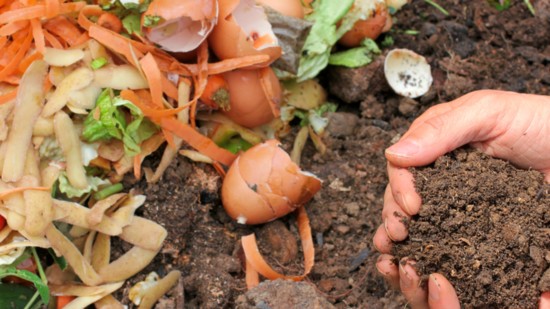Take a simple step toward going green this spring by transforming your food scraps and yard waste into nutrient-rich compost. Eggshells and carrot shavings combined with leaves and weeds make what gardeners call “black gold,” the secret ingredient to successful veggie gardens and lush lawns. A small space in your yard, a minimal time commitment and a dose of patience will yield a batch of compost for next season’s flowers, veggies and grass.
“Composting is not complicated. There’s nothing more simple and natural,” says Damon Mundey of local landscaping company The Turf Tailor. “It’s so worth the little bit of time you put in.”
When compost is added to dirt, it loosens compact soil, helps it retain moisture and adds nutrients that nurture growth. Composting is not only the ultimate in recycling, it also reduces the need for chemicals to treat soil, lawns and gardens throughout the year.
“When used as a top mulch dressing, compost will even repel weeds,” says Damon. “There are so many benefits to using compost.”
Some people fear a compost area will bring vermin, bad smells or an ugly mess to their yard. Damon recommends that you cover your pile to seal in the smells, keep light moisture in and small pests and heavy moisture out.
“Turf Tailor can incorporate compost bins into landscape design, so they don’t look like an eyesore,” Damon shares. “There is an unlimited amount of options: hidden behind a retaining wall, pergola or a line of privacy trees is very popular.”
“We can match your landscaping style,” he adds. “I’ve seen bins made out of wood scraps, rain barrels, five-gallon buckets, even whiskey or wine barrels. It’s a simple process.”
Add composting to your spring checklist for a satisfying boost to all things green.
Turf Tailor, 513.295.2782, TheTurfTailor.net
Sidebar
5 Easy Steps to DIY Compost
1. Location is Key
Place a bin of your choice in a dry, shady spot that can be reached by a garden hose or with a bucket of water.
2. Go Green…and Brown
Mix small pieces of nitrogen-rich green and carbon-rich brown waste: veggie and fruit peels, coffee grounds, grass clippings, dry leaves, dead plants and more. Eggshells and even torn paper towel rolls make good compost, but do not add anything cooked to your pile.
3. Just Add Water
Help the pile to decompose quickly by lightly watering it each time you add scraps.
4. Air It Out
Aerate your mix by giving it a stir with a shovel or rake once each week.
5. Wait for It
Cover the pile for three months or more. When it stops giving off heat and has a dark brown and crumbly appearance, the nutrient-rich super soil is ready to go to work.









